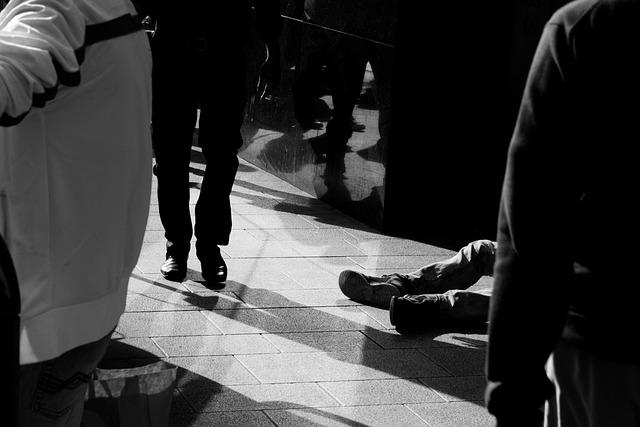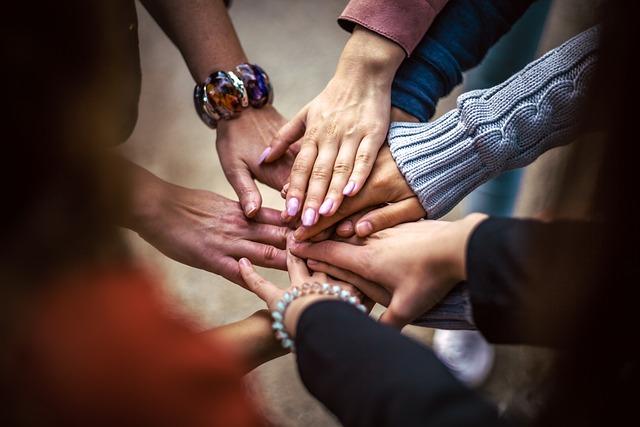In the heart of South Asia, Pakistan stands at a crossroads, grappling with a profound challenge that resonates far beyond its borders: the quest for social justice in the face of enduring inequality. With a rich tapestry of cultures, languages, and histories, the nation is marked by stark contrasts — opulence intertwined with poverty, opportunity shadowed by disenfranchisement. As socioeconomic disparities widen and global narratives shift, Pakistan finds itself confronting a systemic imbalance that threatens the fabric of its society. This article embarks on a journey through the landscapes of Pakistan’s struggle for equity, exploring the voices and movements that advocate for change, the policies aimed at bridging the chasms, and the visionaries who dare to imagine a fairer future. In illuminating this complex battle for social justice, we aim to shed light on the resilience of a nation committed to confronting its inequalities and redefining its destiny.
Unpacking the Roots of Inequality in Pakistans Socioeconomic Landscape
The socioeconomic fabric of Pakistan is woven with threads of historical injustice, political dynamics, and entrenched systemic biases that contribute to a persistent cycle of inequality. At its core, Pakistan’s inequality is driven by land ownership, educational disparity, and political patronage. The concentration of land among a small elite not only limits economic opportunities for the majority but also influences political power dynamics, often leaving marginalized communities without representation or voice. Furthermore, the educational divide, heavily influenced by socio-economic status, reinforces inequalities, restricting upward mobility for individuals from poorer backgrounds.
Additionally, the regional disparities in development play a significant role in shaping the socioeconomic landscape. Urban centers, such as Karachi and Lahore, often overshadow rural areas in terms of resource allocation and infrastructure development. Key factors include:
- Access to Basic Services: Urban areas typically have better healthcare, education, and water supply compared to rural regions.
- Income Inequality: Wage disparities between urban and rural jobs further exacerbate socioeconomic divides.
- Employment Opportunities: Cities offer greater job prospects, while rural residents often rely on agriculture, which is vulnerable to market fluctuations.
This mixed tapestry of inequality not only challenges social cohesion but also hinders the nation’s overall progress, requiring a concerted effort towards social justice to ensure equal opportunities for all citizens.

Empowering Marginalized Communities Through Inclusive Policies
In a nation where inequality often defines the socio-economic landscape, inclusive policies emerge as beacons of hope for marginalized groups. These policies seek to address systemic barriers by ensuring equal access to resources, opportunities, and decision-making processes. They emphasize the importance of participatory governance, which invites voices from all segments of society—particularly those traditionally sidelined. By fostering an environment that celebrates diversity and promotes fair representation, these initiatives can lead to substantial improvements in the lives of those impacted by discrimination and neglect.
To effectively empower marginalized communities, it is crucial to implement strategies that are not only responsive to their needs but also sustainable in the long run. This can include:
- Enhancing educational programs that cater to various socio-economic backgrounds
- Developing job training initiatives specifically designed for minorities and women
- Encouraging community participation in local governance and policy-making
- Ensuring equitable access to healthcare services, especially in rural regions
Such measures serve not just as a remedy for the inequalities faced today, but as a foundation for a future where everyone can thrive. By committing to transformative change through inclusive policies, Pakistan can pave the way toward a more just society, where dignity and respect are fundamental for all its citizens.

The Role of Education in Bridging the Gap: Strategies for Social Equity
Education serves as both a tool and a beacon for social equity, illuminating paths that lead marginalized communities towards empowerment and opportunity. By investing in inclusive curricula that reflect diverse histories and cultures, educational institutions can foster a sense of belonging and recognition among all students. Key strategies for achieving this include:
- Community Engagement: Schools partnering with local organizations to understand and address specific needs.
- Bilingual Education: Providing resources in multiple languages to accommodate students from non-Urdu-speaking backgrounds.
- Scholarship Programs: Financial aid for underprivileged students to ensure they do not miss out on educational opportunities.
Furthermore, the integration of technology in education can significantly reduce barriers in access to quality learning resources. By harnessing mobile and online platforms, even the most remote areas in Pakistan can connect with world-class educational materials. Additional strategies to enhance the effectiveness of education in narrowing the inequality gap include:
- Teacher Training: Equipping educators with the skills needed to address diverse classroom needs.
- Parental Involvement: Encouraging families to participate in their children’s education, creating a supportive home learning environment.
- Life Skills Education: Incorporating practical skills within the curriculum to prepare students for life beyond school.
Impact of Educational Strategies on Social Equity
| Strategy | Impact on Social Equity |
|---|---|
| Community Engagement | Increased resources and support networks. |
| Bilingual Education | Enhanced participation from diverse populations. |
| Scholarship Programs | Expanded access to higher education. |

Building Collaborative Frameworks for Sustainable Social Justice Initiatives
In the quest to challenge systemic inequalities, building a collaborative framework becomes essential for driving impactful social justice initiatives. Such frameworks should consist of diverse stakeholders, including grassroots organizations, academic institutions, and government bodies. By fostering collaboration, these entities can pool their resources, expertise, and perspectives to create more comprehensive and effective strategies. This unity also helps in amplifying the voices of marginalized communities, ensuring their struggles and aspirations are at the forefront of all initiatives. Key elements to focus on include:
- Inclusive Participation: Engage diverse community members to ensure representation of various voices and perspectives.
- Shared Goals: Establish common objectives that align stakeholders’ missions and promote collective action.
- Transparent Communication: Maintain open channels for dialogue to facilitate trust and mutual understanding.
- Resource Sharing: Utilize pooled resources effectively to maximise the impact of initiatives.
To streamline the efforts towards sustainable social justice, a structured approach is vital. This involves identifying and addressing structural barriers that inhibit progress. One effective method is to implement action-oriented workshops and community forums that equip participants with knowledge and skills. By documenting the outcomes of these engagements, stakeholders can analyze their advancements and tweak strategies accordingly. Consider the following simplified framework:
| Action Steps | Expected Outcomes |
|---|---|
| Conduct Community Needs Assessment | Identify specific needs and gaps in services. |
| Organize Training Sessions | Empower community members with skills and resources. |
| Establish Feedback Mechanisms | Ensure continuous improvement based on community input. |
| Monitor and Evaluate Progress | Track success and areas needing attention. |
Concluding Remarks
As we conclude our exploration of Pakistan’s ongoing battle for social justice, it becomes evident that the journey toward confronting inequality is intricate and multifaceted. The stories of resilience, the voices demanding change, and the efforts of activists remind us that the quest for equity is not merely a political endeavor, but a moral imperative deeply woven into the fabric of society. Each step taken toward justice is a testament to the enduring spirit of those who refuse to accept the status quo, illuminating paths for future generations.
Though challenges persist, the collective determination to bridge divides and empower marginalized communities fuels a hopeful narrative. From grassroots movements to policies aimed at fostering inclusive growth, the momentum for social justice is palpable and is gradually reshaping the landscape of Pakistani society.
In the tapestry of history, the threads of struggle and triumph for equality will undoubtedly intertwine, creating a legacy of progress for the nation. As Pakistan continues to confront these profound issues, let us remember that each voice raised in the pursuit of justice contributes to a louder chorus calling for change, ensuring that no one remains unheard in the quest for a more equitable future. In this battle against inequality, every effort counts, and together, we can weave a brighter tomorrow for all.



